#Coretta Scott King Book Award
Photo



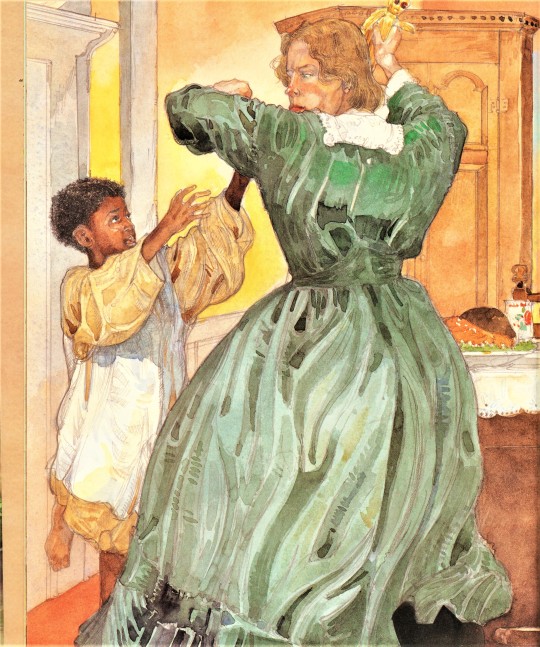
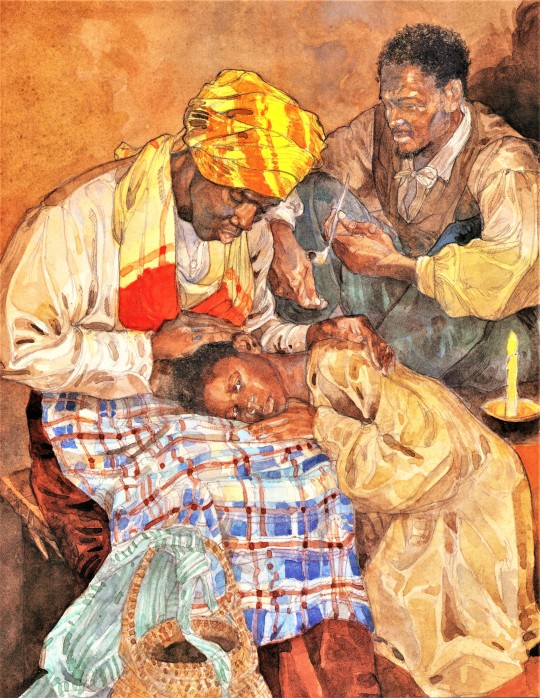

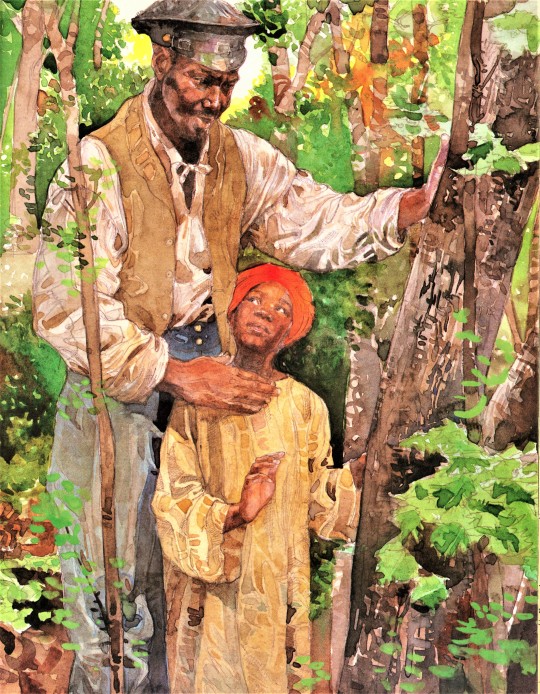
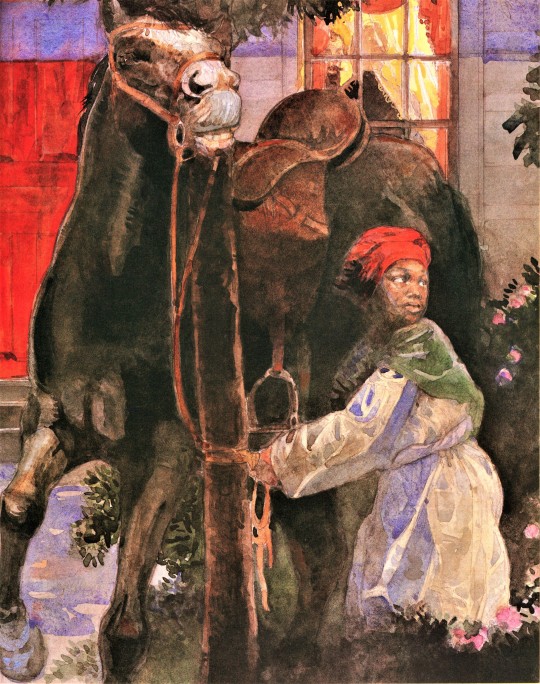


A Jerry Pickney Saturday
Jerry Pinkney (1939-2021) was a multi-award-winning American illustrator and children’s book author. His numerous awards include a Caldecott Medal (2010); five Caldecott Honor Book awards; five Coretta Scott King Book Awards (the most for any illustrator); five Coretta Scott King Honor Awards; the Coretta Scott King-Virginia Hamilton Lifetime Achievement Award (2016); the 2016 Laura Ingalls Wilder Award; four Gold medals, four Silver medals, and the 2016 Original Art Lifetime Achievement Award from the Society of Illustrators; and he was nominated twice for the Hans Christian Andersen Award, considered the Nobel Prize for children's literature, among many other awards and recognitions.
The images shown here are Pickney’s pencil, color pencil, and watercolor illustrations for children’s book author Alan Schroeder’s 1996 fictional biography, Minty, A Story of Young Harriet Tubman, published in New York by Dial Books for Young Readers. This book won Pickney the 1997 Coretta Scott King Book Award for Illustrator, and the book was a Cooperative Children's Book Center Choice for 1996.
Schroeder writes that “While Minty is a fictional account of Harriet Tubman’s childhood, and some scenes have been invented for narrative purposes, the basic facts are true.” Of illustrating this book, Pinkney writes:
The challenge that Minty initially posed for me came from not having a clear picture of Harriet Tubman’s early childhood. However, I was able to imagine the spirited eight-year-old Minty, using Alan Schroeder’s strong text and Harriet Tubman’s biography, The Moses of Her People, as springboards. The National Park Service was also helpful . . . as was the Banneker-Douglas Museum in Maryland, where extensive research uncovered the style of plantations around Maryland during Minty’s childhood and authentic details regarding backgrounds, dress, food, and living conditions of the enslaved as well as the slave owners. My interest was to give some sense of Minty’s noble spirit and open a window to understanding the day-to-day, sunup to sundown life of the slave, by individualizing the hardships in overwhelming circumstances.
In 1978 I was privileged to create the first Harriet Tubman commemorative stamp for the U.S. Postal Service. This book, then, brings me full circle with Harriet’s life and courage.
View another post with illustrations by Jerry Pinkney.
View more posts from our Historical Curriculum Collection.
View more Black History Month posts.
#Black History Month#Jerry Pinkney#African American artists#Black artists#African American History#Harriet Tubman#Alan Schroeder#Minty A Story of Young Harriet Tubman#Dial Books for Young Readers#Coretta Scott King Book Award#Cooperative Children's Book Center Choice#children's books#illustrated books#Historical Curriculum Collection
77 notes
·
View notes
Text

– Junauda Petrus, The Stars and the Blackness Between Them
#book quote of the day#junauda petrus#the stars and the blackness between them#Valentine's day reading recs#romance#sapphic books#lesbian#ya#realistic fiction#Coretta Scott King Honor Award winner#books and libraries#book quotes
7 notes
·
View notes
Photo
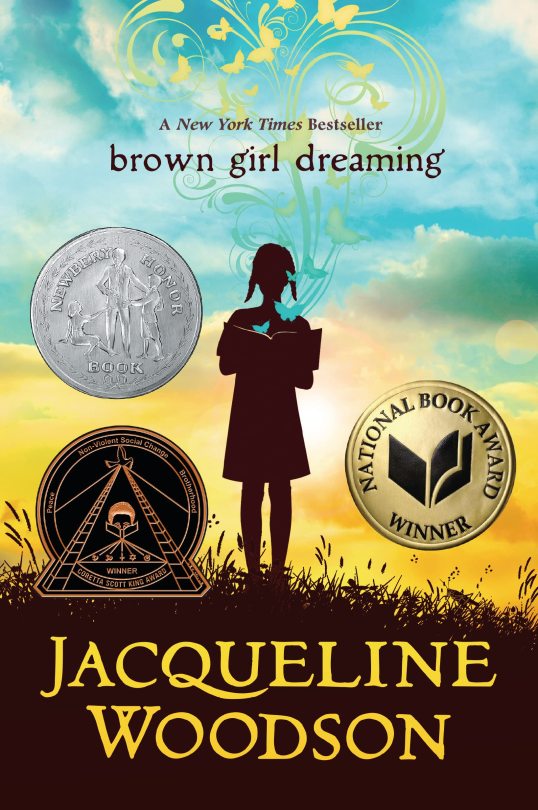
#Brown Girl Dreaming#Jacqueline Woodson#National Book Award#Newberry Honor Book#Coretta Scott King Award
0 notes
Text

Effie Lee Morris stands as a towering figure in the realm of children's literature and library services, leaving an indelible mark through her visionary leadership and tireless advocacy. Born into an era marked by racial segregation and systemic barriers, Morris defied the odds, rising to become a beacon of change and progress. Her journey began as a public librarian in Cleveland and later in the Bronx, where she cultivated a deep appreciation for the transformative power of literature and education.
In 1971, Effie Lee Morris shattered barriers as the first African-American president of the Public Library Association, a milestone that underscored her commitment to equity and inclusion in library spaces. Her groundbreaking work extended beyond administrative roles; Morris played a pivotal role in shaping the landscape of children's literature by spearheading the establishment of the Coretta Scott King Award. By crafting the original selection criteria in 1970, she laid the foundation for recognizing and celebrating African-American authors and illustrators, ensuring their voices resonated prominently in the literary world.
Morris's impact reverberated within the walls of the San Francisco Public Library (SFPL), where she assumed the role of the first coordinator of children's services. During her tenure, she revolutionized children's literature by establishing a research collection of out-of-print books, meticulously documenting the evolving portrayals of ethnic and culturally diverse groups. This collection, later renamed the Effie Lee Morris Historical and Research Collection in her honor, served as a testament to her unwavering dedication to preserving diverse narratives and fostering cultural understanding.
Beyond her professional achievements, Morris's advocacy extended into the realm of social justice and community engagement. She founded the San Francisco chapter of the Women's National Book Association and actively participated in the American Library Association's Social Responsibilities Round Table, championing causes aimed at combating racism, inequality, and poverty. Her contributions were met with widespread recognition, as evidenced by numerous accolades, including the Silver Spur Award and the Grolier Foundation Award, affirming her status as a trailblazer in the literary landscape.
Effie Lee Morris's legacy transcends generations, inspiring future leaders and storytellers to uphold the values of diversity, inclusion, and equity in children's literature and library services. Her visionary spirit lives on in the countless lives touched by her work, serving as a timeless reminder of the transformative power of literature in bridging cultures, fostering empathy, and igniting change.
Read more about Effie Lee Morris here.
236 notes
·
View notes
Text

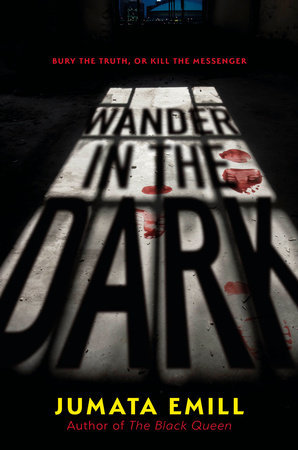
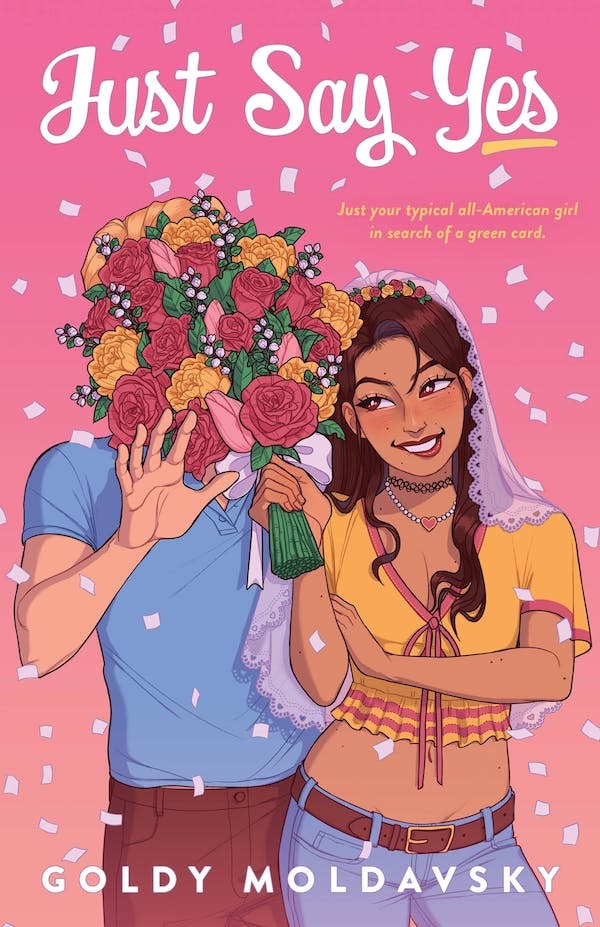
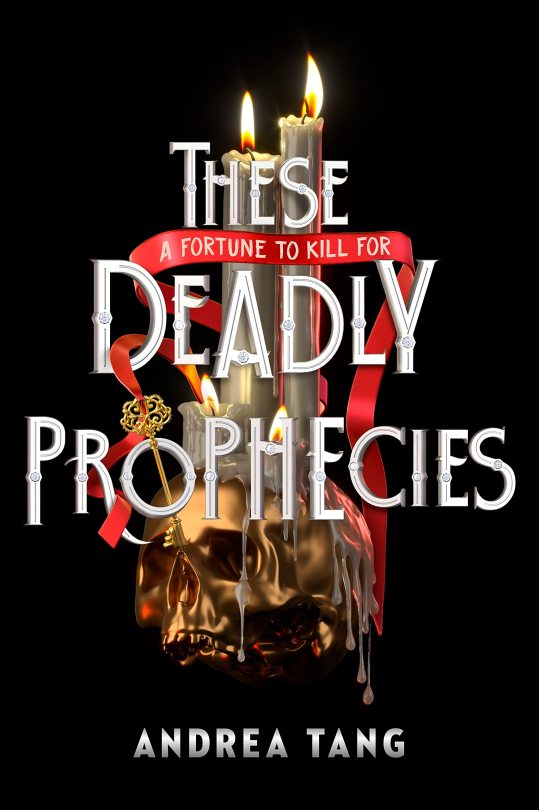
New Releases for January 30, 2024
The four new releases we found this week are filled with poetry, murder, romance, and a little more murder of the fantastical variety.
Poemhood: Our Black Revival: History, Folklore & the Black Experience: A Young Adult Poetry Anthology edited by Amber McBride Taylor Byas, & Erica Martin
HarperCollins
Starring thirty-seven poets, with contributions from acclaimed authors, including Kwame Alexander, Ibi Zoboi, and Nikki Giovanni, this breathtaking Black YA poetry anthology edited by National Book Award finalist Amber McBride, Taylor Byas, and Erica Martin celebrates Black poetry, folklore, and culture.
Come, claim your wings.
Lift your life above the earth,
return to the land of your father’s birth.
What exactly is it to be Black in America?
Well, for some, it’s learning how to morph the hatred placed by others into love for oneself; for others, it’s unearthing the strength it takes to continue to hold one’s swagger when multitudinous factors work to make Black lives crumble. For some, it’s gathering around the kitchen table as Grandma tells the story of Anansi the spider, while for others it’s grinning from ear to ear while eating auntie’s spectacular 7Up cake.
Black experiences and traditions are complex, striking, and vast—they stretch longer than the Nile and are four times as deep—and carry more than just unimaginable pain—there is also joy.
Featuring an all-star group of thirty-seven powerful poetic voices, including such luminaries as Kwame Alexander, James Baldwin, Ibi Zoboi, Audre Lorde, Nikki Giovanni, and Gwendolyn Brooks, this riveting anthology depicts the diversity of the Black experience by fostering a conversation about race, faith, heritage, and resilience between fresh poets and the literary ancestors that came before them.
Edited by Taylor Byas, Erica Martin, and Coretta Scott King New Talent Award winner Amber McBride, Poemhood will simultaneously highlight the duality and nuance at the crux of so many Black experiences with poetry being the psalm constantly playing.
Wander in the Dark by Jumata Emill
Delacorte Press
Amir Trudeau only goes to his half brother Marcel’s birthday party because of Chloe Danvers. Chloe is rich, and hot, and fits right into the perfect life Marcel inherited when their father left Amir’s mother to start a new family with Marcel’s mom. But Chloe is hot enough for Amir to forget that for one night.
Does she want to hook up? Or is she trying to meddle in the estranged brothers’ messy family drama? Amir can’t tell. He doesn’t know what Chloe wants from him when, in the final hours of Mardi Gras, she asks him to take her home and stay—her parents are away and she doesn’t want to be alone.
Amir never gets an answer to his question, because when he wakes up, Chloe is dead—stabbed while he was passed out on the couch downstairs—and Amir becomes the only suspect. A Black teenager caught fleeing the scene of the murder of a rich white girl? All of New Orleans agrees, the case is open and shut.
Amir is innocent. He has a lawyer, but unless someone can figure out who really killed Chloe, it doesn’t look good for him. His number one ally? Marcel. Their relationship is messy, but his half brother knows that Amir isn’t a murderer—and maybe proving Amir’s innocence will repair the rift that’s always existed between them.
To find Chloe’s killer, Amir and Marcel need to dig into her secrets. And what they find is darker than either could have guessed. Parents will go to any lengths to protect their children, and in a city as old as New Orleans, the right family connections can bury even the ugliest truths.
Just Say Yes by Goldy Moldavsky
Henry Holt and Co. (BYR)
Jimena Ramos had no idea she was undocumented.
Now she’s seventeen, and she needs to figure out a way to stay in New York City, the only home she can remember. There’s only one possibility that will get her a green card quickly enough: Jimena is going to find an American to marry her.
She’s got one excellent candidate: Vitaly, her next-door neighbor and friend, the only person she trusts with her secret. But Vitaly’s got his own plans for the future. He’s a definite no.
So Jimena tries online dating. She decides to approach this marriage like a business transaction. She figures out a plan that just might save her and make her a citizen at last.
But of course, she can’t stop thinking about Vitaly.
These Deadly Prophecies by Andrea Tang
G.P. Putnam’s Sons Books for Young Readers
A teenage sorcerer’s apprentice must solve her boss’s murder in order to prove her innocence in this twisty, magic-infused murder mystery perfect for fans of Knives Out and The Inheritance Games .
Being an apprentice for one of the world’s most famous sorcerers has its challenges; Tabatha Zeng just didn’t think they would include solving crime. But when her boss, the infamous fortuneteller Sorcerer Solomon, predicts his own brutal death—and worse, it comes true—Tabatha finds herself caught in the crosshairs.
The police have their sights set on her and Callum Solomon, her murdered boss’s youngest son. With suspicion swirling around them, the two decide to team up to find the real killer and clear their own names once and for all.
But solving a murder isn’t as easy as it seems, especially when the suspect list is mostly the rich, connected, and magical members of Sorcerer Solomon’s family. And Tabatha can’t quite escape the nagging voice in her head just how much can she really trust Callum Solomon?
Nothing is as it seems in this quick-witted and fantastical murder mystery.
26 notes
·
View notes
Text
2023 ALA Youth Media Awards
I was a little disappointed by the coverage of the Youth Media Awards. So few of the book jackets were featured in the articles I read. I'd like to say a special thank you to @the-dust-jacket for taking the time to put together the beautiful posts I have reblogged below.
The Newbery, the Caldecott, the Coretta Scott King, the Bel Pre etc etc-- the whole point of these awards is to drive sales. Because those sales motivate publishers to print more diverse books. The bigger the sales bump, the more important the prize; the more important the prize, the bigger the sales bump.
I think seeing the covers makes a huge impact and I hope @the-dust-jacket's posts gets lots of reblogs.
Congratulations to all those honored this year!
#youthmediaawards#newbery medal#caldecott medal#schneider family awards#michael l printz award#alex award#stonewall book award#sydney taylor book awards#Loretta scott kings book awards#pura bel pre awards#mildred l batch elder award
38 notes
·
View notes
Photo



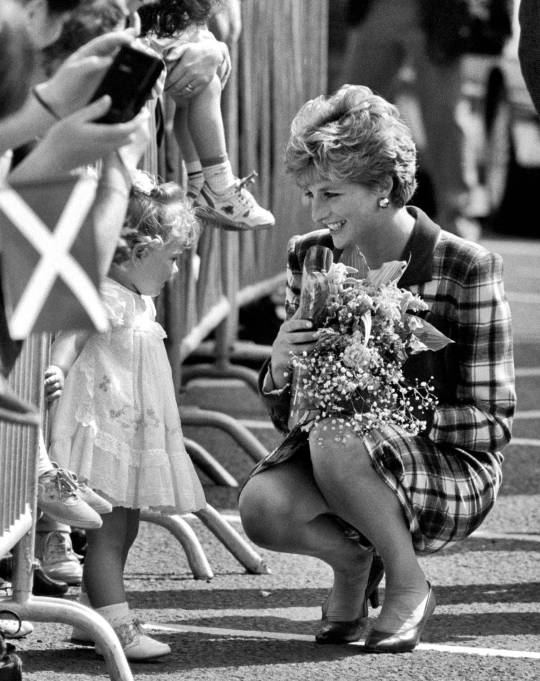
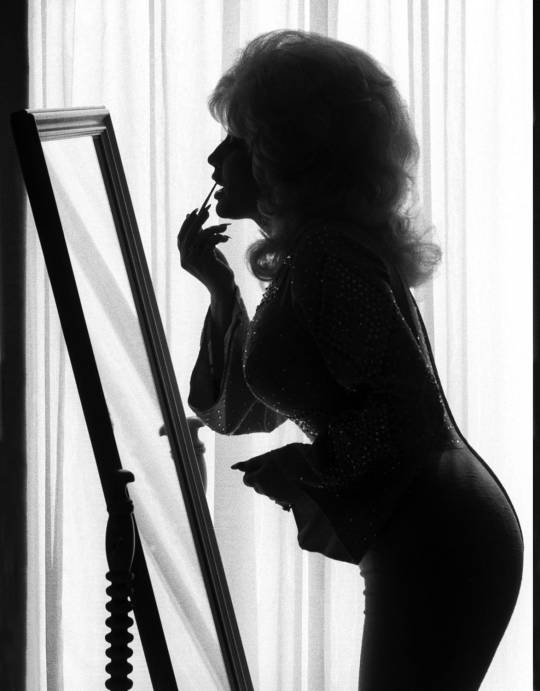

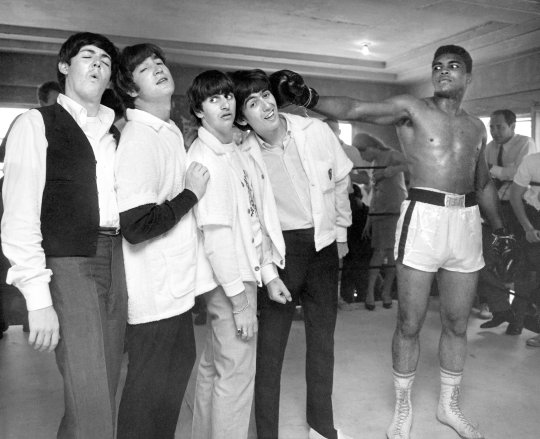

Happy Birthday world renowned photographer Harry Benson, born in Glasgow December 2nd 1929, making 93 today!
And yet another with nothing online about his early life, Harry left school aged thirteen and began working for a local paper, the Hamilton Advertiser. In 1958 he graduated to the cut-throat centre of the tabloid press on London’s Fleet Street, working for the Daily Sketch and then the Daily Express.
On an assignment for the Daily Express, Benson travelled with the Beatles to America in 1964. Continuing to live and work in the US ever since, Benson’s photographs have graced the pages of the most influential magazines and newspapers of the twentieth century.
This guy has been around during some of the worlds most famous events, he was feet away when Bobby Kennedy was assassinated; in the room when Nixon resigned; with Martin Luther King, Jr. on the Meredith march; and with Coretta Scott King at her husband’s funeral. Benson chronicled the building of the Berlin wall and its fall, and covered the aftermath of Hurricane Katrina.
Celebrities Benson has photographed include Bobby Fischer, Elizabeth Taylor, Muhammad Ali and Michael Jackson, hi pics have graced the pages of the top magazines including Life, Vanity Fair and The New Yorker and was the subject of a BBC Scotland documentary, called Photography: Harry Benson which was written by William McIlvanney.
Benson has taken over one-hundred cover shots for People Magazine, and his photography has been featured in Architectural Digest and Newsweek. He has had more than forty solo gallery exhibitions and has had fifteen books of his photography published.
Harry Benson’s photography is in the permanent collections of the Smithsonian and the Scottish National Portrait Gallery in Edinburgh. Both museums exhibited the 2006-2007 exhibition, Harry Benson: Being There, and the Kelvingrove Museum in Glasgow held a major retrospective of the photographer in 2008.
Benson was honoured with a Doctor of Letters from the Glasgow School of Art and Glasgow University in 2007 and has too many awards to his name than I have room to post here! He lives in Wellington, Florida with his wife, Gigi, who works with him on his book and exhibition projects.
Pics are of the man himself ,then three in Glasgow, the fountain one is from the 50's the 70's and third Diane 1992. Dolly Parton next, then the Beatles twice, the second with Ali, James Brown trying to do the splits is the final photo.
22 notes
·
View notes
Text
Children learn from the books they encounter in their homes, schools, and libraries. The lessons they take from these books shape their beliefs and the future selves they will grow into. These lessons come from many dimensions of books; one such dimension which is particularly salient to the reader is who is and is not present in each picture and passage. The presence or absence of different characters teaches children societal norms about who gets to exist in what spaces. This matters for the children themselves—shaping their beliefs about themselves and their place in the world—but may also help shape their views of what spaces others of different identities may inhabit.
The problem is that it is hard to know, systematically, how race and gender are represented in the books we use to teach our children. Parents and teachers cannot possibly read every available book before they choose which books to give or suggest to their children or students, much less librarians, superintendents, or policymakers. These actors face a dauntingly large number of choices and often turn to external sources for help. A common source many look to for such guidance is endorsement of merit by a third party, such as recognition from national awards like the Caldecott and Newbery Medals. Indeed, our analysis of book purchases, library checkouts, and internet searches shows that winning these awards leads to a substantial increase in the number of children who read them. This then raises the questions: What messages about race and gender do these specific books convey, via representation, to the children who read them? And how can we measure similar representation in the other content considered for children’s use?
Using computer vision and natural language processing to measure representation in children’s books
This is where we come in. Our solution, which we describe in a paper forthcoming in The Quarterly Journal of Economics, is to use computers—specifically tools from the computer science subfields of computer vision and natural language processing—to measure representation in children’s books. Our approach develops a series of new tools, and combines them with other existing tools, to measure various features, including race, skin tone, gender, and age, of who is represented in the images and text of curricular materials. These tools are powerful and can measure many possible features of characters. We focus on bringing together tools that can measure the representation of these features of characters in both the text and the images of the books we wish to study.
Our analysis shows that these tools can be rapidly and cost-effectively applied to a wide range of curricular materials. They allow us to quickly and cheaply measure if and how people are represented in a large number of books.
We apply these tools to over 1,000 children’s books which have been recognized by a century of children’s book awards. Our analysis focuses on two main sets of books targeted towards children 14 and under. One set receives recognition for their literary or artistic value. These are books that are recognized by the prestigious Newbery and Caldecott awards. We call this the “Mainstream” collection of books because of their influence. The second set of books are recognized for both their literary or artistic value and for how they highlight experiences of specific identity groups. These include awards such as the Coretta Scott King Award, which highlights books centering experiences of Black individuals, and the Rise Awards which recognize books that center women. We call the books in this group the “Diversity” collection.
Despite significant progress, representations of race and gender in children’s books continue to lag
We first show how race and gender have been taught to children via these books’ images and text, and how this has changed over time. Our findings reveal some enduring patterns and others that indicate change. We find that characters in the Mainstream collection are consistently depicted with lighter skin than those in the Diversity collection. You can see how the two distributions vary in this figure: the Diversity collection, outlined in blue, clearly has a darker average skin tone than the Mainstream (see Figure 1). What’s more, it also has more variance—and thus diversity—of skin tones represented than the Mainstream collection.
Figure 1. Distribution of skin colors by human skin colors in Mainstream and Diversity collections in children’s literature

Note: This figure shows the distribution of skin color tint for faces detected in books from the Mainstream and Diversity collections. The mean for each distribution is denoted with a dashed line.
Source: Author’s calculations. See paper for additional details.
In Figure 2, we show that this difference between the two collections holds true even after conditioning on the race of the person being shown.
Figure 2. Distribution of skin colors by human skin colors in Mainstream and Diversity collections in children’s literature by character’s race

Note: This figure shows the distribution of skin color tint by the predicted race of the detected faces in the Mainstream and Diversity collections.
Source: Author’s calculations. See paper for additional details.
In other results, we show that children are more likely than adults to be shown with lighter skin, despite there being no definitive biological foundation for this that we are aware of. In other words, lighter-skinned children see themselves represented more often than do darker-skinned children. This result, unlike those previously, holds for both collections. That is, even in books recognized for highlighting the experiences of Black children, darker-skinned children are less likely to see themselves represented.
Moving from skin color to race, we also find that in both collections, Black and Latino people have been underrepresented in these books, relative to their share of the U.S. population, corroborating prior work on the representation of race in smaller subsets of these collections of books. Our analysis of gender shows that, again in both collections, females are also less likely than males to be present in these books, despite equal population shares. Digging deeper, we compare how often females appear in images, as compared to in text. We find that females are consistently more likely to be visualized (seen) in images than mentioned (heard) in the text, which suggests more symbolic inclusion in pictures more than substantive inclusion in the actual story. Figure 3 below plots this result.
Figure 3. Female representation in images and text of children’s books

Note: This figure plots collection-by-decade average percentages of female representation in images (on the y-axis) and female representation in text (on the x-axis). This enables a comparison between the proportion of females represented in the images and the proportion of females represented in the text of the children’s books in our sample.
Source: Author’s calculations. See paper for additional details.
Over time, however, the patterns show signs of change. As time progresses, both collections of books include more characters with darker skin tones. Further, over the period we study, the representation of both race and gender trend closer to equality, though neither ever reach proportional representation, relative to the larger population.
Our paper then analyzes separate data on the checkouts of books in libraries and purchases of books by households to better understand what shapes who consumes different types of children’s books. We find that people tend to buy books that contain characters who share their gender and racial identities. Yet books centering many historically minoritized identities are either more scarce than other books, more expensive, or both. This suggests that greater provision of—and access to—books representing a more diverse range of identities than is currently available would fill a clear and desired need in the market. We also find that the content of books that people in a given area purchase are correlated with the political leanings of a community: in areas where progressive views are more common, people consume books with a more diverse range of identities represented than in areas where conservative views prevail.
Conclusion and implications
This research investigates who is represented; in other work, we also investigate how people are represented in children’s books. In these analyses, we show that the manner in which people are represented to children often reproduces societal norms and disparities. We see, for example, that females are more likely to be described relative to their appearance and roles in the family, while males are more likely to be described relative to their competence and roles in business. A century ago, we see a substantial gap between the sentiment, or overall positive feelings, associated with females and males—with males being shown in substantially more positive terms. Over time, however, this difference narrowed and is no longer detectable in books published today. We find similar disparities in the representation of race. For example, Black people, and Black women in particular, are more likely than white people to be mentioned in passages with more negative sentiment. While this gap, too, has lessened over time, in many contemporary stories we still find more negative sentiment associated with Black individuals than others.
Prior research has shown that the content of books can shape children’s beliefs, performance in school, and ultimately the adults they become. Our analysis shows that the representation of characters in books—and in award-winning, highly visible children’s books in particular—conveys important messages about how society values people by their race and gender. These messages trend towards equality over time, but even in many books published today, they still send the message that white people and males are the most visible and thus the most important members of society. This finding highlights some potential harms to children from recent political conflicts over critical race theory and the efforts to ban certain books that have sprung from these conflicts. It also underscores the important work that librarians, teachers, and parents play in building out school and home libraries with content showing a diversity of representation. These efforts can help ensure we teach children that all people can inhabit the many rich potential futures that await them.
5 notes
·
View notes
Link
10 notes
·
View notes
Photo
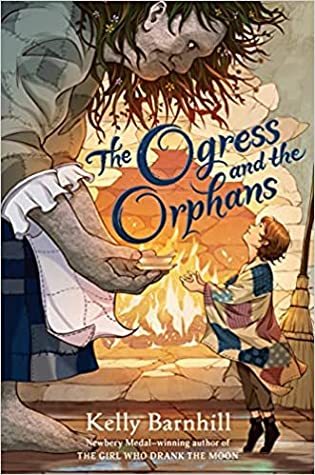

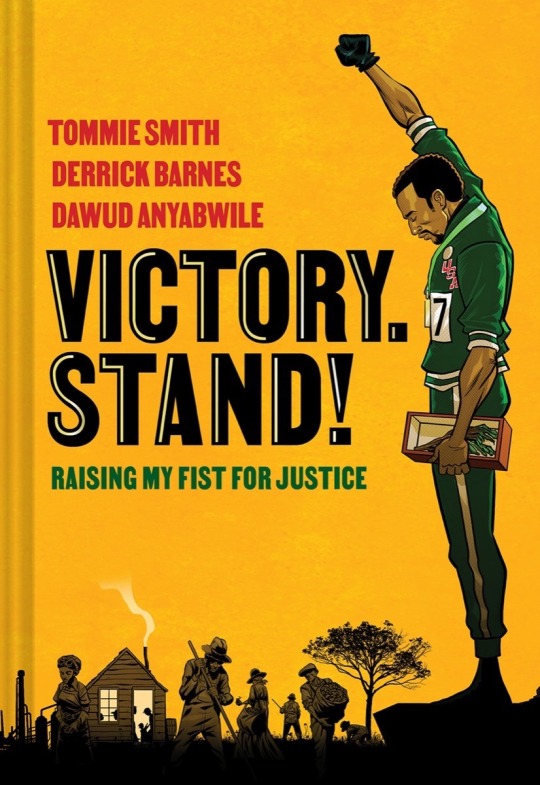
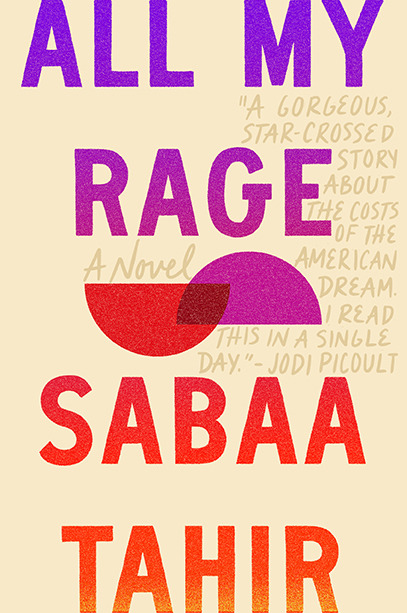

National Book Award Finalists: Young People’s Literature
Have you read any of these National Book Award Finalists? These young people’s selections were chosen out of 296 submissions! There are also finalists for fiction, nonfiction, poetry, and translated literature - be sure to check out the full list here.
The Ogress and the Orphans by Kelly Barnhill
Stone-in-the-Glen, once a lovely town, has fallen on hard times. Fires, floods, and other calamities have caused the people to lose their library, their school, their park, and even their neighborliness. The people put their faith in the Mayor, a dazzling fellow who promises he alone can help. After all, he is a famous dragon slayer. (At least, no one has seen a dragon in his presence.) Only the clever children of the Orphan House and the kindly Ogress at the edge of town can see how dire the town’s problems are.
Then one day a child goes missing from the Orphan House. At the Mayor’s suggestion, all eyes turn to the Ogress. The Orphans know this can’t be: the Ogress, along with a flock of excellent crows, secretly delivers gifts to the people of Stone-in-the-Glen.
But how can the Orphans tell the story of the Ogress’s goodness to people who refuse to listen? And how can they make their deluded neighbors see the real villain in their midst?
The Lesbiana’s Guide to Catholic School by Sonora Reyes
Sixteen-year-old Yamilet Flores prefers to be known for her killer eyeliner, not for being one of the only Mexican kids at her new, mostly white, very rich Catholic school. But at least here no one knows she's gay, and Yami intends to keep it that way.
After being outed by her crush and ex-best friend before transferring to Slayton Catholic, Yami has new priorities: keep her brother out of trouble, make her mom proud, and, most importantly, don't fall in love. Granted, she's never been great at any of those things, but that's a problem for Future Yami.
The thing is, it's hard to fake being straight when Bo, the only openly queer girl at school, is so annoyingly perfect. And smart. And talented. And cute. So cute. Either way, Yami isn't going to make the same mistake again. If word got back to her mom, she could face a lot worse than rejection. So she'll have to start asking, WWSGD: What would a straight girl do?
Victory. Stand! by Tommie Smith, Dawud Anyabwile, & Derrick Barnes
On October 16, 1968, during the medal ceremony at the Mexico City Olympics, Tommie Smith, the gold medal winner in the 200-meter sprint, and John Carlos, the bronze medal winner, stood on the podium in black socks and raised their black-gloved fists to protest racial injustice inflicted upon African Americans. Both men were forced to leave the Olympics, received death threats, and faced ostracism and continuing economic hardships.
In his first-ever memoir for young readers, Tommie Smith looks back on his childhood growing up in rural Texas through to his stellar athletic career, culminating in his historic victory and Olympic podium protest. Cowritten with Newbery Honor and Coretta Scott King Author Honor recipient Derrick Barnes and illustrated with bold and muscular artwork from Emmy Award-winning illustrator Dawud Anyabwile, Victory. Stand! paints a stirring portrait of an iconic moment in Olympic history that still resonates today.
All My Rage by Sabaa Tahir
Lahore, Pakistan. Then.
Misbah is a dreamer and storyteller, newly married to Toufiq in an arranged match. After their young life is shaken by tragedy, they come to the United States and open the Cloud’s Rest Inn Motel, hoping for a new start.
Juniper, California. Now.
Salahudin and Noor are more than best friends; they are family. Growing up as outcasts in the small desert town of Juniper, California, they understand each other the way no one else does. Until The Fight, which destroys their bond with the swift fury of a star exploding.
Now, Sal scrambles to run the family motel as his mother Misbah’s health fails and his grieving father loses himself to alcoholism. Noor, meanwhile, walks a harrowing tightrope: working at her wrathful uncle’s liquor store while hiding the fact that she’s applying to college so she can escape him - and Juniper - forever.
When Sal’s attempts to save the motel spiral out of control, he and Noor must ask themselves what friendship is worth - and what it takes to defeat the monsters in their pasts and the ones in their midst.
Maizy Chen’s Last Chance by Lisa Yee
Welcome to The Golden Palace!
Maizy has never been to Last Chance, Minnesota... until now. Her Mom’s plan is just to stay for a couple weeks, until her grandfather gets better. But plans change, and as Maizy spends more time in Last Chance (where she and her family are the only Asian-Americans) and at The Golden Palace - the restaurant that’s been in her family for generations - she makes some discoveries. For instance:
• You can tell a LOT about someone by the way they order food.
• And people can surprise you. Sometimes in good ways, sometimes in disappointing ways.
• And the Golden Palace has Secrets.
But the more Maizy discovers, the more questions she has. Like, why are her mom and her grandmother always fighting? Who are the people in the photographs on the office wall? And when she discovers that a beloved family treasure has gone missing - and someone has left a racist note - Maizy decides it’s time find the answers.
#young adult books#national book award#library books#book recommendations#book recs#reading recommendations#reading recs#to read#TBR pile#tbr#booklr#book tumblr
8 notes
·
View notes
Text
MONDAY’S NOT COMING

[Book cover art for Monday's Not Coming]. (n.d.). Retrieved March 4, 2023, from https://www.google.com/?&bih=945&biw=1680&client=safari&hl=en
Monday Charles is missing and no one seems to know, or even care, where she is and why she hasn't shown up to school in months. This is not the case for her best friend Claudia Coleman, who is determined to find Monday. Claudia and Monday are inseparable, so when summer vacation ended and 8th grade was starting, Claudia was perplexed by Monday's absence. Time passed, and still nothing. Completely lost without her best friend, Claudia will do anything and everything possible to bring Monday home. This novel will keep you guessing, even after it's over! 5/5 stars, highly recommend for anyone who loves a great mystery novel that is hard to imagine the ending.
AWARDS:
Coretta Scott King Book Awards, 1970-2023. New Talent Winner, 2019.
youtube
Tiffany D. Jackson discusses the inspiration behind Monday’s Not Coming and the importance of the themes within her novel
#monday's not coming#tiffany d. jackson#triggering#child abuse#young adult mystery#young adult literature#Youtube
3 notes
·
View notes
Note
10, 11, 15, 16 for book asks
10. What was your favorite new release of the year?
Probably either True Biz by Sara Nović or The School for Good Mothers by Jessamine Chan. True Biz shows the perspective of three different people at a school for the Deaf- the headmistress who is a CODA, a boy who's entire family is Deaf until his little sister is born hearing, and a girl who got a Cochlear Implant as a baby and wasn't allowed to learn ASL until her parents divorce and her dad allows her to enroll and learn about the community. The School for Good Mothers is a dystopia where parents who are deemed to be unfit- for reasons ranging from active abuse to letting their kid walk to and from school alone- are forced to attend a boarding school where they care for android children and are constantly monitored
11. What was your favorite book that has been out for a while, but you just now read?
I'm going to say The Remembrance of Earth's Past trilogy by Cixin Liu translated by Ken Liu and Joel Martinsen. It spans centuries following humanity after first contact is made in the 60s during China's Cultural Revolution and the aliens say that because their world is dying, they are coming to invade and colonize Earth. They don't have FTL travel though, so we follow the centuries of people trying to find ways out of or cope with humanity's expiration date
15. Did you read any books that were nominated for or won awards this year (Booker, Women’s Prize, National Book Award, Pulitzer, Hugo, etc.)? What did you think of them?
I don't really follow any of the awards stuff, so there could be more, but as far as I know The Sentence by Louise Erdrich was shortlisted for the Women’s Prize and Monday's Not Coming by Tiffany D Jackson won the Coretta Scott King and John Steptoe New Talent Award. I liked both of them but neither really blew me away. I gave both of them 4 stars. The Sentence is about a bookshop owner dealing with the tumult of 2020 while also dealing with the ghost of her most annoying customer still coming in. Monday's Not Coming is a mystery about a teenager girl who's best friend goes missing but she can't get any adults to care or look into it
16. What is the most over-hyped book you read this year?
Miracle Creek by Angie Kim. I had heard so many good things about it, but it was so ableist I had to DNF. It follows the courtroom drama after a miracle cure for everything from infertility to autism goes wrong and a fire breaks out and kills two people. Maybe if I had finished it the narrative would've ended up condemning the ableism, but I couldn't stand it
2 notes
·
View notes
Text
Book Review for The Talk

Genre: Social Issues, African-American/Black Experience
Audience: PreK-3rd Grade
Medium: eBook via Libby
Summary: Jay is a young Black boy who is enjoys hanging out with his friends and being a carefree kid. As he grows older, his family begins to prepare him for the unjust reality he may face in the world.
Justification: Growing up my grandma would often buy me Coretta Scott King award winners as she felt it was important for me read books that were about the Black experience. She wanted to do this as I was a young Black and Puerto Rican girl who lived in a predominately White area. Therefore, picking this book was a way for me to pay homage to that time. Also, it brings me great pleasure to see more children's book that present difficult conversations about race to young readers in a more understandable way.
Evaluation of Illustrations: Briana Mukodiri Uchendu's illustration style is reminiscent of Black art in the 90's and 2000's. This style choice brings about a sense of familiarity and nostalgia to those who grew up surrounded with art like that. Uchendu takes care in ensuring that each Black character is an individual through the various skin shades, hair texture, and hairstyles shown. The choice to illustrate the pages where Jay's parents have The Talk with him in darker colors instead of the warmer colors shown throughout the book convey to the reader the importance of the message.
Evaluation of Format: I've never read a picture book as an eBook before, so this was a new experience for me. It was a simple process to checkout the eBook via Libby and download it to my Kindle cloud. I typically read eBooks on my iPhone or tablet, but when I opened The Talk on those devices I found that the illustrations and text were too small. If I tried to zoom in on the text, I couldn't see the illustrations and vice versa. I instead had to pull up the eBook on my desktop so that I may read it as if it were a physical book. Overall, I appreciated how the eBook format allowed me to zoom in on the illustrations so that I may notice all the details.
Evaluation on Story Goal: Upon reading the book blurb, it can be assumed that the book's goal is to help adults explain the racism and discrimination Black youth may face as they grow older. The books author, Alicia D Williams, tastefully executes this goal by remaining subtle throughout the book. Instead of outright telling the reader that as jay and his friends get older, they are looked at and treated differently, it is shown via illustrations of people in society staring at them. Also, the choice to not tell the reader what Jay's parents said to him during The Talk was great because it allows for the readers parents to do so.
APA Citation: Williams, A. D. (2022). The talk (B. N. Uchendu, Illus.). Simon and Schuster.
0 notes
Text

Kadir A. Nelson (born May 15, 1974) is one of the premier illustrators in the US. Born in Little Rock, the son of Lenwood Melvin Nelson, a former wrestling coach, and Emily Diane-Gunter, a telecommunications engineer and motivational speaker.
Raised in Atlantic City, New Jersey, and Southern California, he was mentored by an uncle who was an experienced artist, and an art teacher. He won several art competitions. He studied architecture but switched his major to illustration and graduated with honors from Pratt. He married Keara Ginneh Ricks (1996).
He was offered an assignment to do artwork for Amistad. Debbie Allen enlisted him to contribute illustrations to her children’s book, Amistad: “Give Us Free”. He was the development artist for Spirit: Stallion of the Cimarron.
He received the Society of Illustrator’s Gold Medal and by the beginning of the 21st century had positioned himself artistically to ensure steady work and professional success and recognition. A realist painter whose colorful, luminous, expressive works often portray African American heroes and the everyday delights and activities of common folk.
His creations have appeared in Sports Illustrated, The New York Times, and, on eight occasions, on the cover of The New Yorker; on stamps for the US Postal Service; on album covers for singers Michael Jackson and Drake; and in 33 children’s books he authored, co-authored, or contributed illustrations to.
His artworks have been exhibited in the Smithsonian Anacostia Museum, The Studio Museum in Harlem, The Society of Illustrators Museum, the Museum of Texas Tech University, and the Akron Art Museum. His honors and awards include three gold and five silver medals from the Society of Illustrators; two Caldecott Honors and two Coretta Scott King Awards from the American Library Association; three NAACP Image Awards; two New York Times Best Illustrated Book selections for We Are the Ship: The Story of the Negro Baseball League and Nelson Mandela, and he was named Sports Artist of the Year by the US Sports Academy.
Divorced, he has two daughters and a son. #africanhistory365 #africanexcellence
0 notes
Text
Firebird by Misty Copeland, illustrated by Christopher Myers

Category: Coretta Scott King, 2015 Illustrator Award Winner
Summary: Written by ballerina Misty Copeland, this poetic children's book is written as a dialogue between Copeland and a young, unnamed, aspiring Black ballerina. It encourages the young ballerina to believe in herself and not give up on her dream to be as good as Copeland one day on stage.
Justification: Christopher Myers won the 2015 Coretta Scott King Award for his breathtaking illustrations, acknowledging him as an African American illustrator who beautifully depicted the Black experience.
Evaluation:
Texture - Myers uses broad strokes to capture motion and texture in his paintings. Readers almost feel as though they could touch these three-dimensional images and feel something other than a flat surface.
Color - The vibrant, brilliant colors capture the unbreakable spirit of Copeland's story. Both Copeland and the aspiring ballerina are the typically the brightest spots on the pages.
Dialogue - The story is told as a back-and-forth between Copeland and the young ballerina. They talk about the struggles and challenges they both faced, and Copeland encourages her to not give up, and to keep reaching for her dreams because "The space between you and me is longer than forever."/"And I will show them that forever is not so far away."
Copeland, M. (2014). Firebird: Ballerina Misty Copeland shows a young girl how to dance like the Firebird (C. Myers, Illus.). G.P. Putnam’s Sons Books for Young Readers.
0 notes
Text
Gone Crazy in Alabama by Rita Williams-Garcia

Genre: Coretta Scott King Award winner
Targeted Age Group: elementary school age
Summary: Three sisters travel from Brooklyn to rural Alabama for the summer to spend time with their grandma and great-grandmother. During this summer they play, fight, and learn a lot about their extended family dynamics, as well as their own relationships with each other.
Why I chose this book: I chose this book partially because it was available to me as an eBook, and I needed to find a good eBook for this assignment. I was also intrigued by the summary I read online.
Evaluation:
The setting of this book is both important and well described. The story is set in rural Alabama in the late 60s, a time when slavery is gone but racism is far from gone. Three of the main characters are from Brooklyn, and a very different story could have been told about them in their hometown. But because of the Alabama setting, it can be seen more how the South is further behind than the North in terms of equality. The rural setting also creates a different feel, as the city girls get to learn about cows and chickens.
Another defining aspect of this book is the characters. Each and every one has a strong personality and is well described. Even though there are some characters with very little presence in the book (such as the girls' mother), a lot can be learned about who they are from the writing. The author creates believable personalities, as well as believable relationships between the characters. The three sisters argue like all siblings do (and often everyone is in the wrong in one way or another).
I read this book on a kindle, and this was my first experience reading a book on a kindle since my Grandpa gave me his old one very recently. I ended up enjoying this kind of reading a lot more than I thought I would. For one, I love the percentage it shows of how much of the book you have read, as this was a great motivator for me to read quickly. Additionally, I enjoyed being able to lay on my side in a way that is not possible with a regular book. It was also nice to read in bed without a lamp, since the kindle screen is bright enough to be read in the dark (but not so bright to cause eye strain). I will definitely be reading more books on the kindle in the future, now that I have learned it is an option I can enjoy.
Citation: Williams-Garcia, R. (2016). Gone Crazy in Alabama. Quill Tree Books.
0 notes